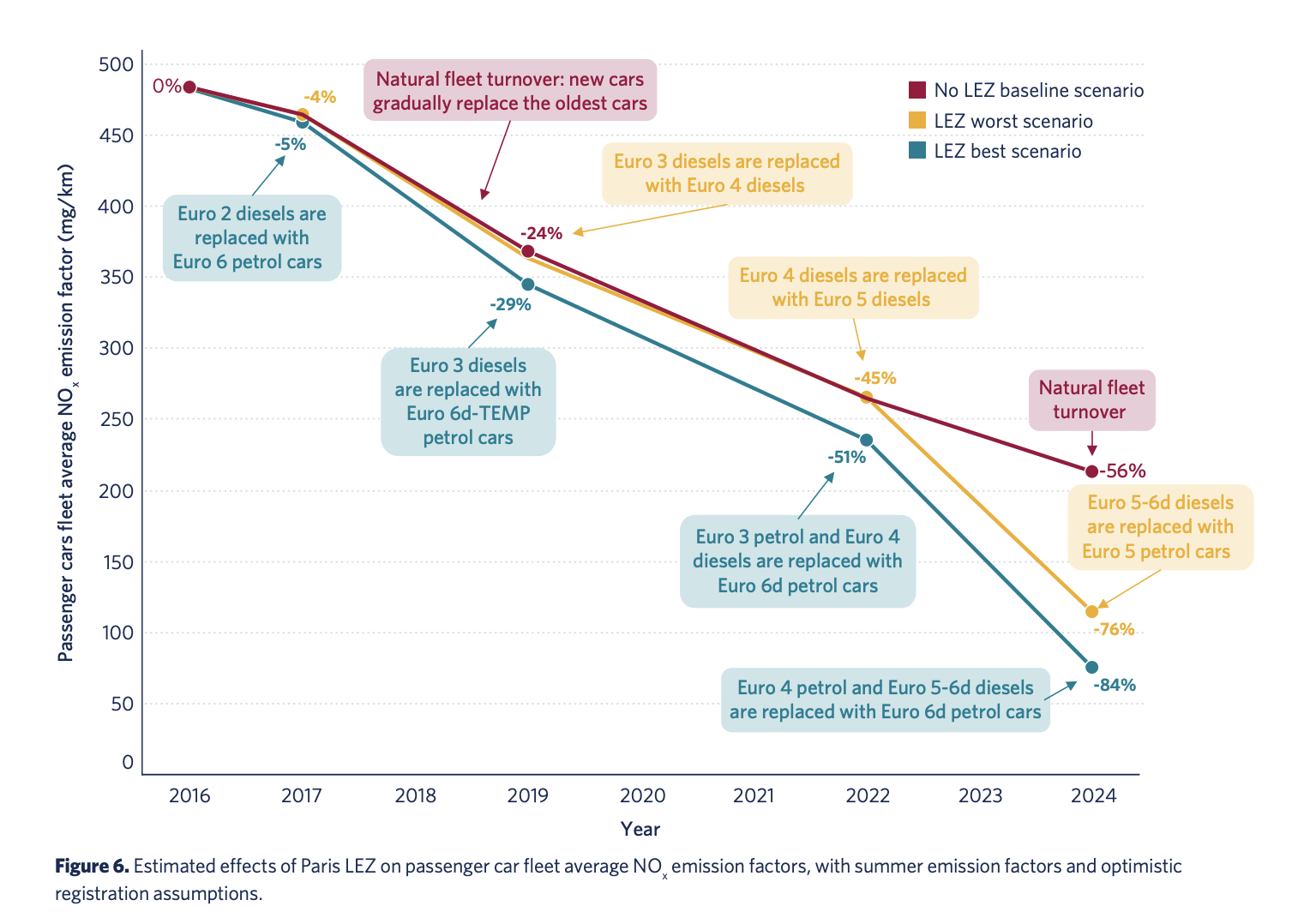TRUE publication
Impacts of the Paris low-emission zone and implications for other cities
Paris was the first metropolitan area in France to establish a low-emission zone (LEZ) as a measure to reduce air pollution from transport. The Paris LEZ restricts access according to vehicles’ classification in France’s Crit’Air system, which is based on a vehicle’s certification level under the Euro emissions standards and its fuel type. At present, the LEZ excludes only diesel passenger cars not certified to the Euro 4 standard at minimum, but the criteria for entry into the zone will become progressively more stringent from now until 2030. By 2030, under the current implementation plan, only battery-electric and hydrogen fuel cell vehicles will be permitted to enter the LEZ.
This study estimates the reductions in nitrogen oxide (NOx) emissions under the current implementation schedule for the LEZ and also estimates benefits from accelerating the implementation schedule.
The analysis projects that with the implementation of the more stringent entrance requirements for access to the LEZ, passenger car NOx emissions in 2024 will be 76% to 87% below 2016 levels. In contrast, without the LEZ Paris would likely not see similar reductions in vehicle NOx emissions until 2031–2034, and in 2024 average passenger car NOx emission factors would be only 47% to 62% below 2016 levels.
Accelerating the implementation schedule would also accelerate the air-quality benefits of the LEZ. Moving implementation of Phase 5 (in which petrol cars not certified to at least Euro 5 and all diesel cars except plug-in hybrid-electrics will be excluded from the zone) from 2024 to 2020 would mean a 72%–77% total reduction in passenger car NOx emissions in 2020 compared to 2016. Beginning Phase 5 in 2022 would yield a 66%–71% reduction that year over 2016.
Other changes in addition to early implementation could also expedite NOx reduction in the Paris LEZ. With the substantial vehicle replacement incentives available in France, the Paris LEZ restrictions could be tightened without unduly penalizing owners of older vehicles. If excluded vehicles are replaced by ZEVs, NOx reduction rises to 91% compared to a scenario without the LEZ. And because enforcement of the LEZ in Paris currently relies entirely on visual inspections by police, automating enforcement using technologies such as license plate recognition could more effectively restrict access by high-emitting vehicles.

Effects of the Paris LEZ on passenger car fleet-average NOx emission factors. Reflects a summer emission factor and an optimistic registration assumption that vehicles registered at the end of the year and certified to the newest possible emission standard. “Worst case” assumes noncompliant vehicles are replaced by vehicles that meet the bare minimum requirements of the LEZ. “Best case” assumes noncompliant vehicles are replaced by new petrol vehicles.
Attachments
TRUE-Paris-LEZ-fact-sheet-A4-v5.pdf
TRUE-Paris-LEZ-fact-sheet-FR-A4-v3.pdf
